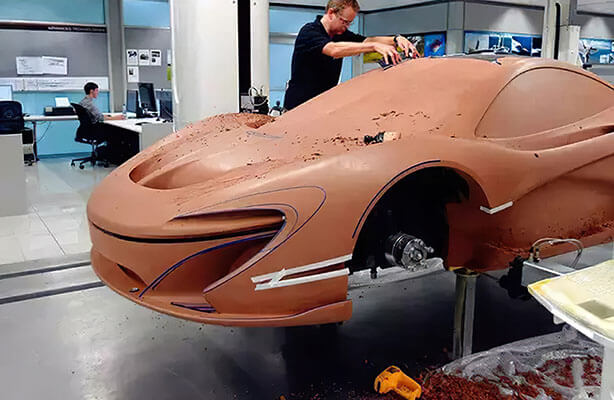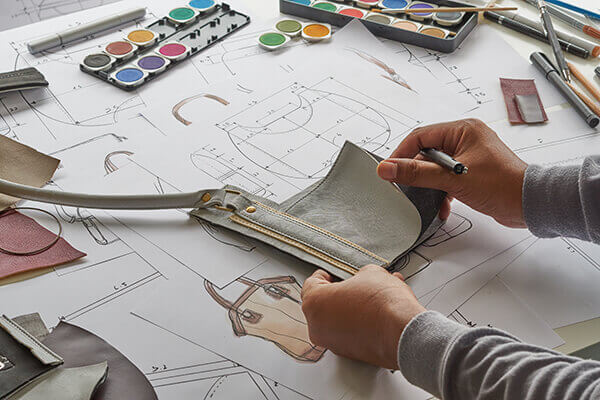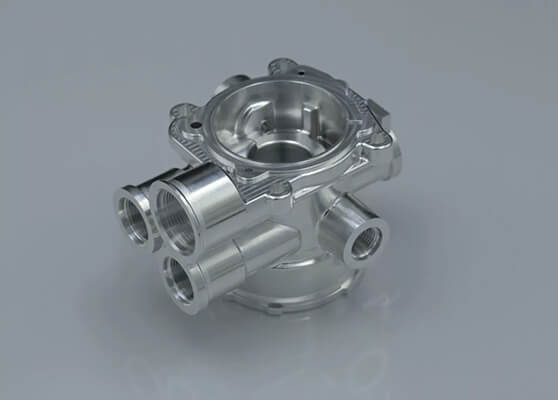When you have a great idea for a new product, one important thing is to create a prototype to demonstrate your design before making the product. A physical product can tell you more than a drawing. But many people may be unfamiliar with it. Here is everything you need to know about the prototype.
What is a product prototype?
A product prototype is the first version of a product to be made from an abstract idea. It brings your idea to life and shows what it can be really like. For example, if a car manufacturer wants to develop a new car model, the designer will first draw a sketch and then use clay to create the car. This clay sculpture is the prototype.

A prototype is important in product manufacturing. It can help you check whether your design works well and meet your expectations. So you can find any flaws and make adjustments by testing the prototype. If you skip the prototyping stage and go straight into production, it is very likely that the final products are very different from what you expected in the functions, texture, etc. That will be a huge loss.
What’s more, a prototype does not need to be 100% the same as the final product. You can use low-cost materials to make a simple prototype, as long as it can demonstrate your design. So it won’t cost you much but can help you find and solve problems in an early stage.
You may be confused about the prototype and sample. Are they the same? Both of them can be used to find product problems and refine the design before starting mass production. Now let’s see the differences between them.
Prototype vs sample: what’s the difference?
The prototype is the first sample according to the design drawings or product photos. And there are many stages from the prototype to a finished sample ready for production.
For example, you want to customize leather handbags. Before the factory buys materials to make samples, it needs to make a paper pattern for the bag. They will draw every single piece of the handbag on paper or cardboard and make the measurements on it. And then integrate the paper patterns into the first paper prototype of the handbag. This is used to determine the size and shape of each part and make cutting adjustments.

After the paper pattern is confirmed, the factory will start making samples based on the paper pattern. Samples can be made with the fabric, accessories, and specified techniques as you required or other alternative things. You can modify it repeatedly, during which there will be several rounds of samples. When you confirm the final PP sample which is the same as your final products including materials and all other details, the factory can start bulk production.
Four steps to create a prototype
Conduct product research
When you have an idea for a product, you’d better do thorough research on similar products. This can help you determine if your idea is innovative and understand your product’s market value, the competition it may face, its manufacturing process, and the estimated total cost.
Also, it is very important to understand who your customer base is, what problems they are currently facing, and how your product can solve these problems.
Create a design sketch
After doing the research and ensuring your idea, you need to create a simple representation of your idea. You can just roughly draw your idea on a piece of paper, like many of our clients. Or you can create a more detailed representation, such as a virtual 3D model of your product by using software technologies CAD.
Make a prototype
Now, you can actually start developing your prototype. If you plan to manufacture your products from China, many Chinese factories or your sourcing agent like JingSourcing can help you make the prototype. It will be cheaper than using your domestic resources like the USA, EU, etc.
There are no rules for how to make a product prototype. It depends on your product, requirement, and budget. There are two common ways to make a physical prototype, which I will talk about in detail in the next section.
Test and refine your design
After testing the early prototype, if you find any problems that do not meet your expectations, such as structural and functional flaws, you can make adjustments to your design.
You may be afraid that your supplier will leak or steal your design. If you think it’s necessary to protect your intellectual property, you can sign an NNN with your supplier before making a prototype. It’s important to choose a reliable partner.
Two common ways to make a prototype with their costs
3D printing and CNC machining are two leading manufacturing technologies for rapid prototyping and small-batch production. In actual business, 3D printing is more commonly used to make product prototypes, accounting for about 90% due to its many advantages.
3D printing
3D printing uses a 3D printer to build the material into a product model bit by bit, just like a bird building a nest. It usually takes more than 7 hours to make a prototype. Here is a video for you to know how 3D printing work more intuitively.
3D printing has no restrictions on product shapes, and any strange shapes can be created. But usually, they are in one color. It uses specially developed 3D printing materials. Currently, ABS, PLA, and UV curable resins are commonly used. In addition, acrylic, nylon, ceramic, stainless steel, etc., can also be used.
The cost of 3D printing ranges from tens to hundreds of dollars. For example, a simple plastic accessory prototype costs around $50, and a complete plastic toy prototype is around $300. It is not expensive. But the printed prototype is rough and fragile, which is suitable for disposable prototypes that do not require high precision.
For example, before manufacturing many products, such as jewelry, accessories, toys, furniture, etc., many people will first use 3D printing to make a physical prototype. Then they decide whether to open molding according to the effect of the prototype, so as to avoid paying very expensive molding fees but getting unsatisfactory products. This is a cost-effective way.

CNC prototype
CNC (Computerized Numerical Control) uses the cutting head of the machine to cut and engrave the material into shape. It is more suitable for products with a neat structure, such as metal or plastic accessories and Jewelry. Here is a video for a more intuitive understanding.
Different from 3D printing, CNC can cut nearly all solid materials, from the strongest metals and alloys to wood, plastic, foam, and more. This is a great advantage. And CNC can provide high precision through high control over the movement of the cutting tools. Therefore, if you have high requirements for hardness and precision, you should choose a CNC prototype.
However, harder materials and stricter precision mean that cutting speed is slower and the costs are higher. For example, materials such as foam and plastic are soft, so the cutting speed is fast, and the cost is only tens of dollars. But metal and ceramics are hard and the cutting speed is slow, so it is much more expensive, hundreds of dollars.

JingSourcing can make your product prototype
Many of our clients want to customize products but just send us a rough sketch or a few words, to tell us what they want. They have absolutely no idea what to do next. They come to the right place. We will deal with everything on their behalf including but not limited to the following:
Our professional agents will communicate with our clients by Email or WhatsApp to carefully guide and inquire about product details, and understand their specific needs.
Our professional design team will make more detailed and practical design drawings according to the needs of clients.
We make product prototypes and send them to our clients to confirm whether it is what they want. Clients can modify repeatedly until the final PP sample is passed. For any difficulty, we can find the best solution.
Case: One of our clients wants to customize handbags. The leather he wants is very expensive and can only be imported from Australia. But the client’s budget is limited. So our agents found 5 types of replaceable and cheaper fabrics from tens of suppliers.
We make prototypes of each fabric according to the client’s design and sent them to him to visually feel and touch the product. One of the handbags is what the client expects and the cost is within his budget. We help him take the first step successfully.
Our factory can start mass production once the samples are confirmed. We provide many add-valued services, such as following up on the whole production process, quality inspection, cargo transportation, etc.
We specialize in developing products from scratch.
Tell us your product idea & create your prototype

Leave A Comment